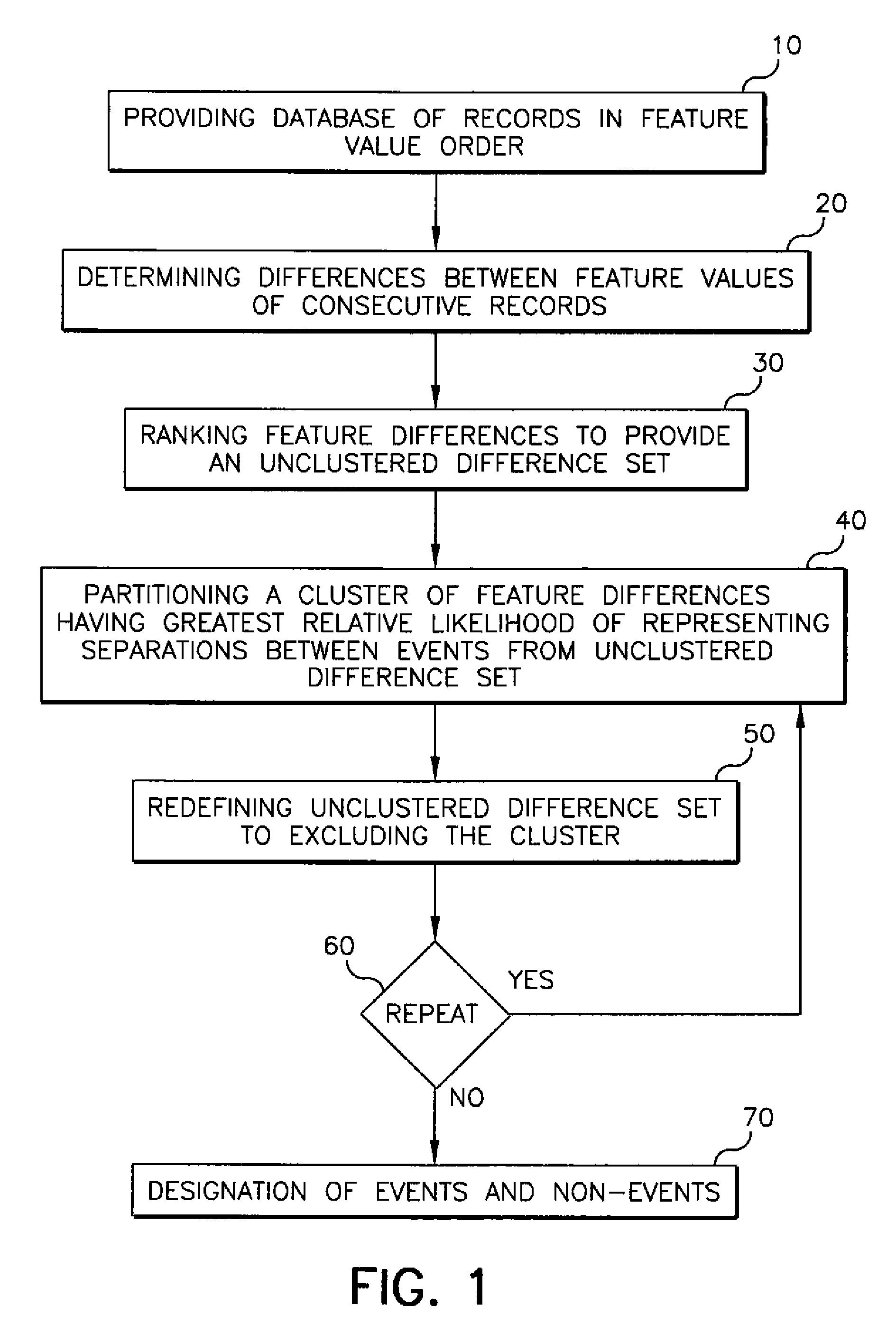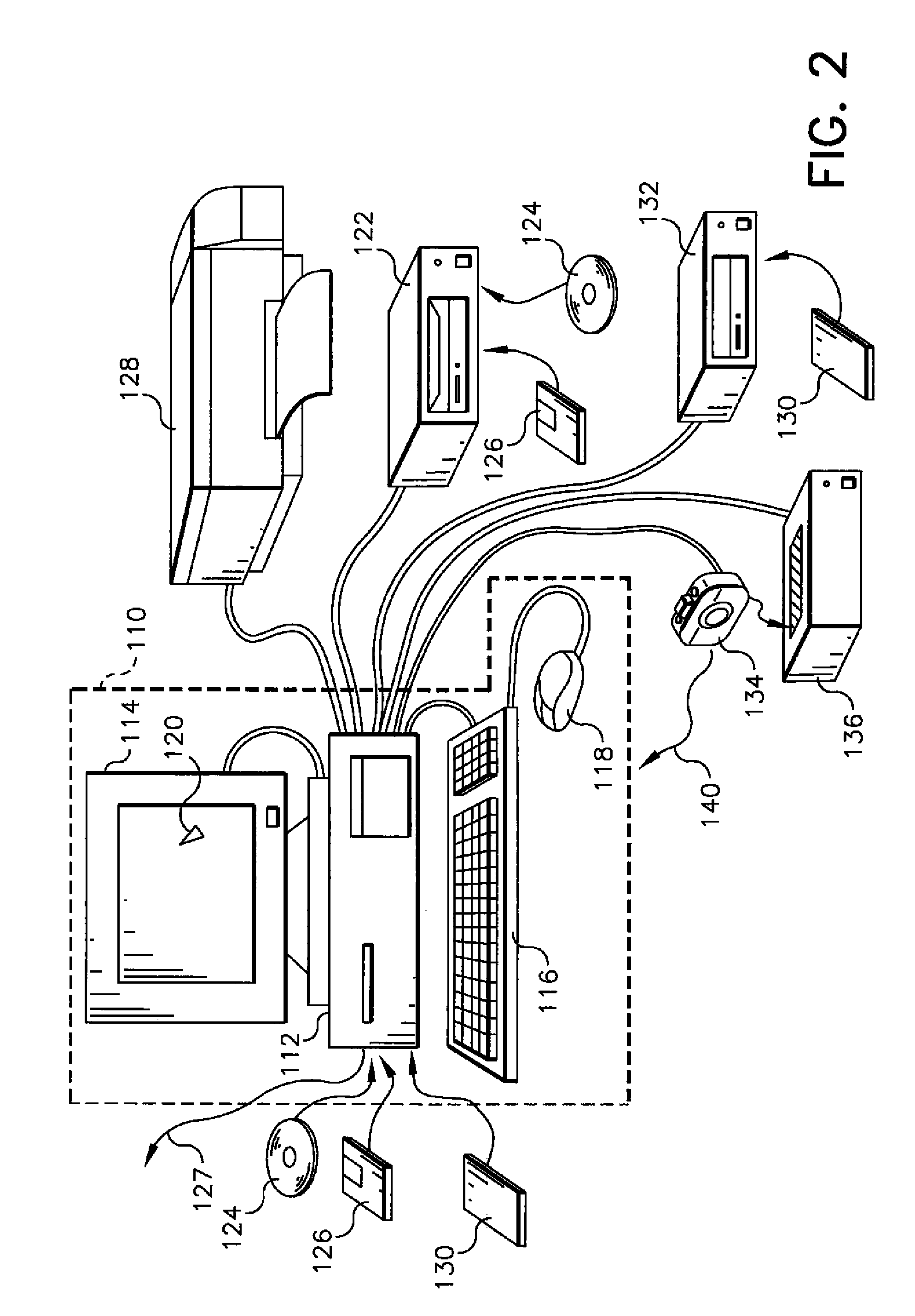Multi-tiered image clustering by event
a multi-tiered, event-based technology, applied in the field of image processing, can solve the problems of inherently difficult use for that purpose, slow and burdensome, and extensive tests revealed problems with consistency, and achieve the effect of low error ra
- Summary
- Abstract
- Description
- Claims
- Application Information
AI Technical Summary
Benefits of technology
Problems solved by technology
Method used
Image
Examples
Embodiment Construction
[0023]In the method, a database of records is classified into a plurality of different clusters and a remainder, based upon different relative likelihoods that feature value differences between records represent separations between events.
[0024]In the following description, some embodiments of the present invention will be described as software programs. Those skilled in the art will readily recognize that the equivalent of such software can also be constructed in hardware. Records are generally described in relation to images and image sequences. Other types of records by themselves or in any combination with images and image sequences are dealt with in a like manner, but modified to provide appropriate output differences. Output can be provided by the communication of information reflecting clustering results.
[0025]Because image manipulation algorithms and systems are well known, the present description will be directed in particular to algorithms and systems forming part of, or c...
PUM
 Login to View More
Login to View More Abstract
Description
Claims
Application Information
 Login to View More
Login to View More - R&D
- Intellectual Property
- Life Sciences
- Materials
- Tech Scout
- Unparalleled Data Quality
- Higher Quality Content
- 60% Fewer Hallucinations
Browse by: Latest US Patents, China's latest patents, Technical Efficacy Thesaurus, Application Domain, Technology Topic, Popular Technical Reports.
© 2025 PatSnap. All rights reserved.Legal|Privacy policy|Modern Slavery Act Transparency Statement|Sitemap|About US| Contact US: help@patsnap.com



